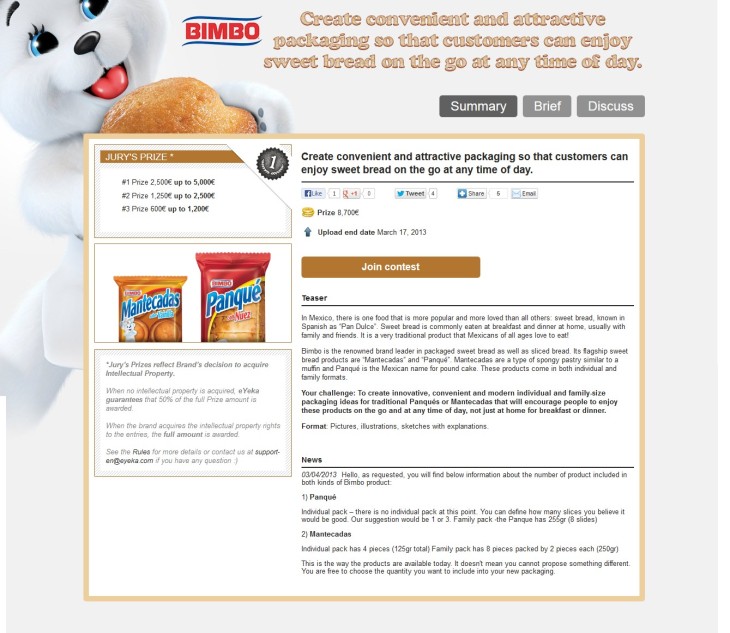 In October 2009, I covered the publication of the Best Global Brands ranking, underlining that none of the 100 brands came from emerging market countries in 2009. In one part of the report, called “Tomorrow’s Brand Leaders, Up-and-Coming Global Brands,” Interbrand China’s Jonathan Chajet nevertheless listed a couple of brands that could become global in a near future, like companies from China (Lenovo, Haier, Tsingtao), India (Tata, Reliance, ArcelorMittal), Russia (Kaspersky Lab, Aeroflot, Gazprom), South Africa (MTN, Anglo-American, SABMiller) and Brazil (Itaù, Vale, Natura). You can see some of them in my post (even if it’s written in German).
In October 2009, I covered the publication of the Best Global Brands ranking, underlining that none of the 100 brands came from emerging market countries in 2009. In one part of the report, called “Tomorrow’s Brand Leaders, Up-and-Coming Global Brands,” Interbrand China’s Jonathan Chajet nevertheless listed a couple of brands that could become global in a near future, like companies from China (Lenovo, Haier, Tsingtao), India (Tata, Reliance, ArcelorMittal), Russia (Kaspersky Lab, Aeroflot, Gazprom), South Africa (MTN, Anglo-American, SABMiller) and Brazil (Itaù, Vale, Natura). You can see some of them in my post (even if it’s written in German).
Some of these brands, like Lenovo, Haier, or Natura, are presented in a fascinating book called Brand Breakout: How Emerging Market Brands Will Go Global, by N. Kumar (London Business School) and J-B. Steenkamp (University of North Carolina), which I just finished reading. Based on extensive field and desk research, the authors present 8 strategies that brands are taking to go global (the Brand Aquisition Route for Lenovo, the Asian Tortoise Route for Haier or the Natural Resources Route for Natura, for example).
The desire to have global brands from emerging markets is the commonality that interests us in this book (p. 13)
To better understand how brands go global, the authors develop a framework of eight different pathways that brands (not companies) can take to break into the global marketplace. I won’t detail them extensively, as the book does it very well, here’s just a short list of these strategies:
- Asian Tortoise Route: Migrating to higher quality and brand premiums after establishing a successful low cost offering (Haier, Pearl River Piano, Wanli…)
- Business to Consumer Route: Migrating from B2B into B2C (ASD, Galanz, Huawei, Mahindra, HTC…)
- Brand Acquisition Route: Buying Western global brands (Geely & Volvo, Lenovo & IBM, Tata Motors & Jaguar or Land Rover…)
- Positive Campaigning Route: Overcoming negatives associated with the country of origin through marketing (Ospop, Roewe, Shanghai Vive…)
- Cultural Resource Route: Leveraging cultural myths to build and grow the brand (Herborist, Shanghai Tang, Havaianas…)
- Diaspora Route: Following migrants and/or tourists who have experienced the product in the home market (Mandarin Oriental hotels, Reliance MediaWorks, Corona beer…)
- Natural Resource Route: Branding natural resources tied to a particular geographical location (Café de Columbia, Natura…)
- National Champion Route: Leveraging strong state support to establish and grow a global brand (China Mobile, Embraer, Emirates Airlines…)
Some of the examples are very famous, Like Lenovo’s move to buy IBM’s PC division in 2004, others are less. In the chapter about brand acquisitions, I learned that Heinz was partly Brazilian-owned (Berkshire Hathaway and 3G Capital) now, as Weetabix is Chinese-owned (Bright Foods), Aston-Martin is Kuwait-owned Investment Dar) or Sara Lee is Mexican-owned (Grupo Bimbo). Why do emerging market companies purchase a Western brand rather than create a new or grow their own brands?
In the vast majority of cases, the acquiring firm retains the brand from the developped country for its unique brand positioning (p. 99)
Compared to marketing-intensive and slow growth strategies like the Asian Tortoise or the B2C Routes, acquiring established brands can be a time-effective investment. “Impatient firms and entrepreneurs from emerging markets opt to acquire an existing global brand,” the authors explain “[because it] has always taken less time and money than building new global brands” (p. 93 & 96).

Since buying the Jaguar & Land Rover brands in 2008 from Ford, Ratan Tata’s company Tata Sons showed a solid growth. He’s now retired (click on image to read the Telegraph article)
“Emerging giants […] buy these companies to gain complementary competencies [such as] technologies, products, brands or distribution networks, and capabilities like new business models and marketing and innovation skills” to fuel their global growth plans (p. 98). After acquisition, they can either retain the brands, as Tata did for Jaguar and Land Rover, or migrate to the emerging company’s brand, as Lenovo gradually did with IBM’s Thinkpad brand.

Lenovo, which bought IBM’s PC business in 2005, migrated the IBM Thinkpad brand to the Lenovo brand, leveraging the 2008 Beijing Olympics to launch Lenovo as a global brand. Click on the image to read the NY Times article
This fascinating example, as well as many others, make Brand Breakout such an interesting book. I loved the references to brand rankings (like Millward Brown’s Brandz 100 or Interbrands Best Global Brands) throughout the book, and liked the fact that most chapters include useful sections about success factors for each strategy. I was a bit disappointed by the chapter about the Positive Campaign Route, where I would have expected more details about the role of private corporations in national branding campaigns, and the Cultural Resources Route, where I would have loved more detailled descriptions of some brands (like Kweichow Moutai, Shang Xia or Zuczug).
But overall I took great pleasure reading this book, which I see as a useful framework to understand the global growth strategies of emerging brands – a fascinating topic. I couldn’t help finding parallels with my topic of interest, crowdsourcing, where an increasing number of emerging brands have become active over the last years:

In July 2011, Lenovo (China) crowdsourced “Doer Stories” through eYeka. Winning spots came from Canada, Russia, Nigeria, Portugal, India & Italy

In July 2012, Ülker (Turkey) crowdsourced design ideas to position its brand as a global player. Winning designs came from Russia & France

In March 2012, Grupo Bimbo (Mexico) crowdsourced packaging ideas for Mantecadas and Panqués pound cakes. Winning ideas came from China, Spain & Brazil

In May 2013, the appliance brand Beko (Turkey) crowdsourced visuals to inspire its marketing. Winning ideas came from Russia, Spain & Nigeria

In June 2013, Brand’s (China) crowdsourced stories to promote its health supplements. Winning story ideas have not been announced yet
So, it seems that the world’s leading brands use crowdsourcing, but also increasingly emerging brands like those showed above. Interbrand’s 2012 ranking still hasn’t any emerging market brand, but Millward-Brown’s 2013 BrandZ 100 has many, almost exclusively from China: China Mobile, ICBC, Tencent, China Construction Bank, Baidu, Agricultural Bank of China, China Life, Bank of China… the first non-Chinese brand is India’s ICICI Bank, ranked 59th. The strength of Brand Breakout is not only to present cases of relatively unknown brands going global, but also and foremost to classify the growth strategies that they use. The authors conclude that…
What was so energizing about our visits to emerging market firms in China, India, Brazil, and elsewhere was the sheer ambition that they displayed (p. 217)
If you want to be on the forefront and find out about tomorrow’s global leaders, I really recommend the read!
Great job! Did you find the book online?
Yes I did!
Can you send me the link please?
Can you send me the link?